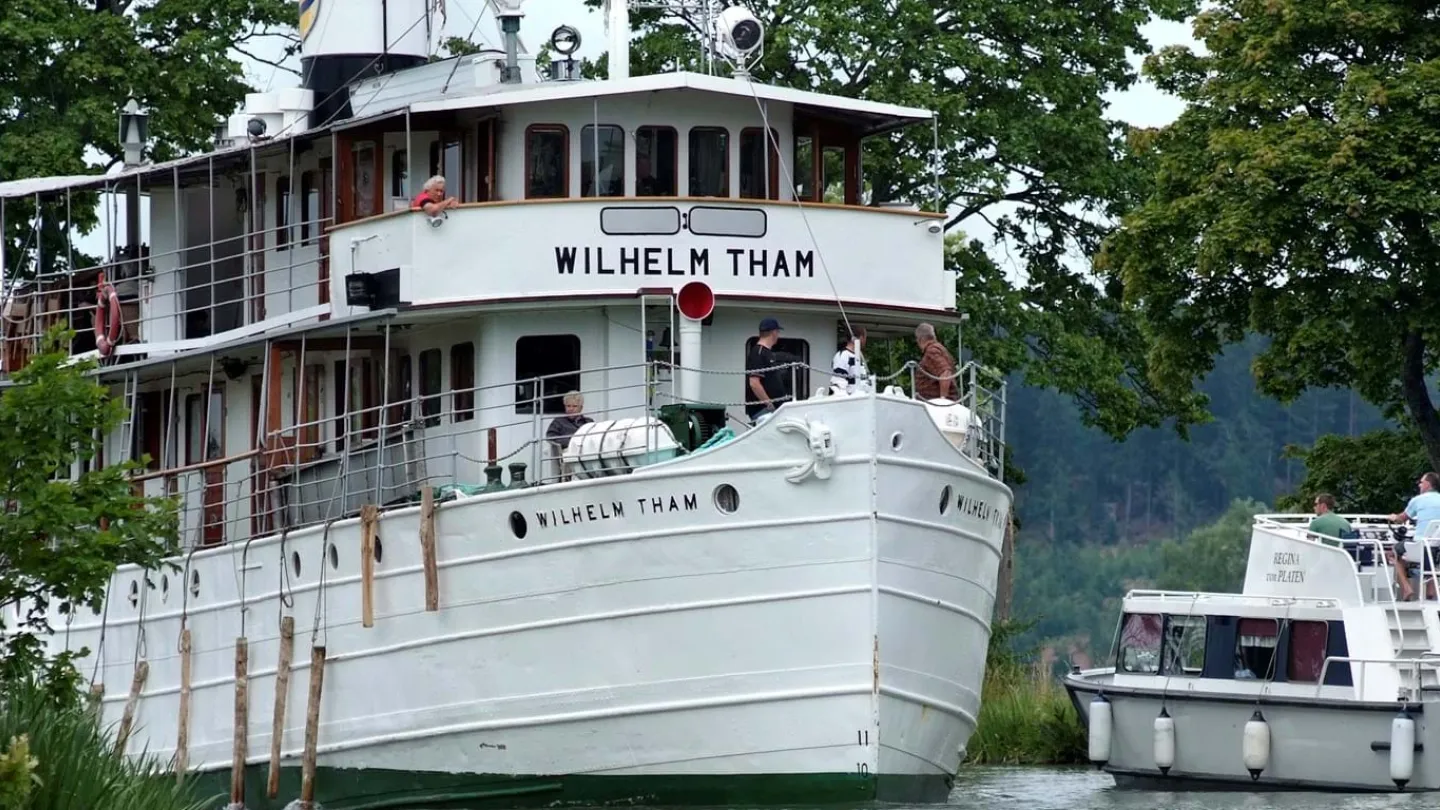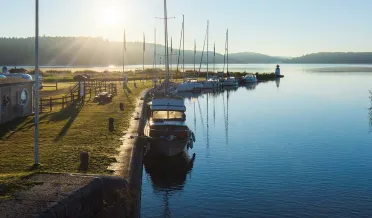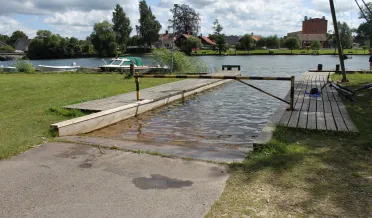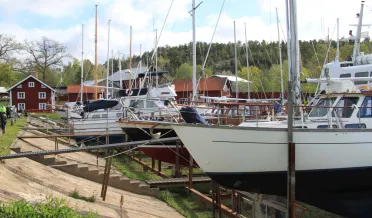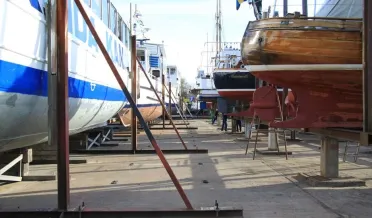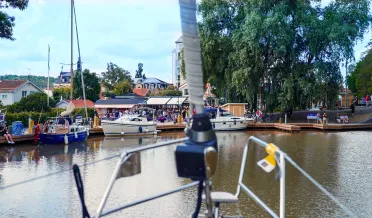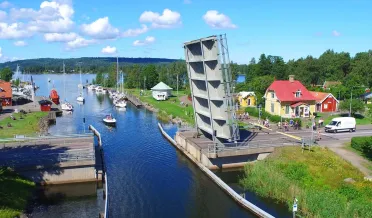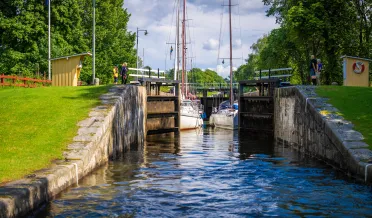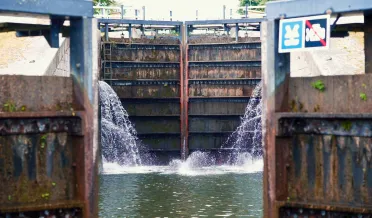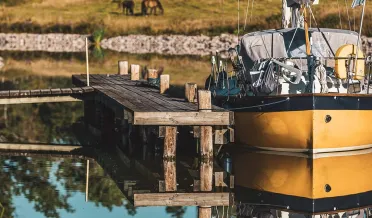Meeting with a passenger boat
The Göta Canal is operated by a number of passenger boats, which all operate different stretches of the canal. The ships are often spectacular to see where they slide through the landscape, and they attract visitors' attention wherever they pass. However, if you are traveling with your own pleasure boat on the canal, there are some important things to consider when you meet or end up behind a passenger boat on the Göta Canal.
Passenger boats often have a speed of 3 to 4 knots. The limited depth of the canal does not allow them to move faster. Do not follow too close behind; the vessel may need to stop or reverse. Due to currents and undertow effects, it is very risky to overtake a passenger vessel.
Do not drive too close
Passenger boats on the Göta Canal usually hold a speed of 3-4 knots. The limited depth of the canal means does not allow them higher speeds. For safety reasons, do not follow too close behind; the vessel may need to stop or reverse. Due to currents and undertow effects, it is very risky to overtake a passenger vessel.
Meetings
First hand, you should follow any instructions you receive from the duty officer on the passenger boat. If the duty officer does not indicate on which side to pass, standard maritime regulations apply. Pass at 2–3 m from the passenger vessel at a speed of about 4 knots. This allows for good steering and a good overview. Do not stray too close to the edge – the canal does not have its full depth there.
If you meet in a curve, passenger ships usually want to be on the outside. This means they you may pass starboard to starboard – meaning that the ships are “driving on the left”. The vessel may indicate its intentions with two short blasts on his horn (means “we will alter course to port”).
Meetings in narrow passages
Billströmmen, the Spetsnäs Canal and the Berg Canal are areas where the canal is blasted into the bedrock. The passages are narrow and only achieve the full depth in the middle of the canal, which means passenger boats are unable to pass here.
Passenger boats give the following signals before entering these passages:
| Billströmmen | easterly | two long and one short blast — — • |
| westerly | two long blasts — — | |
| Spetsnäs Canal | easterly | one long blast — |
| westerly | three long blasts — — — | |
| Berg Canal | easterly | one long blast – |
| westerly | two long blasts — — |
Between Lanthöjden and Tåtorp, vessels can only meet at the marked meeting places. Position yourself in the middle of the canal about 30 metres from the oncoming passenger boat, veer slightly starboard or port and pass the passenger boat at 0.5 metres apart at a speed of 1–2 knots. Pay attention to signals from the passenger boat’s skipper!
Secure your boat
Pleasure craft at a jetty or pier must be well moored at bow and stern when passenger boats pass by. As the larger vessel passes the water sinks and you get a strong undertow effect. Make sure your boat is securely moored. You will not have the strength to hold the lines in your hands.
Other signals used by passenger vessels
| Passenger boat will alter course to starboard (right) | 1 short blast • |
| Passenger boat will alter course to port (left) | 2 short blasts • • |
| Passenger boat will reverse 3 short blasts | 3 short blasts • • • |
